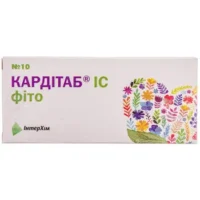Description
Lamitril Tablets 100 mg. №60
Ingredients:
Each tablet contains 100 mg of Lamotrigine.
Mechanism of Action:
Lamotrigine, the active ingredient in Lamitril tablets, acts by stabilizing electrical activity in the brain. It is believed to inhibit the release of glutamate, a neurotransmitter implicated in seizure activity.
Pharmacological Properties:
Lamotrigine is an antiepileptic drug that belongs to the phenyltriazine class. It modulates voltage-gated sodium channels, inhibiting the release of excitatory neurotransmitters.
Indications for Use:
Lamitril tablets are indicated for the treatment of epilepsy in both adults and children.
Contraindications:
Avoid the use of Lamitril if you have a known allergy to lamotrigine or any other components present in the tablets.
Side Effects:
Common side effects of Lamitril may include dizziness, drowsiness, headache, blurred vision, and nausea. Serious but rare side effects may include severe skin reactions and mood changes.
Usage Instructions:
The typical starting dose for adults is 25 mg once daily for two weeks, followed by 50 mg once daily for the subsequent two weeks. The maintenance dose usually ranges from 100 to 200 mg per day, administered in two divided doses.
Benefits Compared to Analogues:
Lamitril has demonstrated efficacy in reducing seizure frequency in patients with epilepsy, with a well-tolerated profile compared to some other antiepileptic medications.
Suitable Patient Groups:
Lamitril can be used in both pediatric and geriatric populations, with appropriate dosage adjustments based on age and individual patient characteristics.
Storage and Shelf Life:
Store Lamitril tablets at room temperature away from moisture and heat. Check the expiration date on the packaging and do not use the product beyond that date.
Packaging Description:
Lamitril tablets are typically packaged in blister packs containing 60 tablets each. The packaging should be intact and undamaged when purchased.
Scientific Evidence:
Clinical studies have shown that Lamotrigine is effective in reducing seizure frequency in patients with epilepsy. A study published in the Journal of Neurology, Neurosurgery & Psychiatry highlighted the efficacy of Lamotrigine in treating focal seizures, demonstrating a significant reduction in seizure frequency compared to a placebo.
Additional Information:
- It is crucial to adhere to the dosage instructions provided by your healthcare provider to optimize the therapeutic outcomes with Lamitril tablets.
- Inform your physician about any other medications you are currently taking to prevent potential drug interactions.





